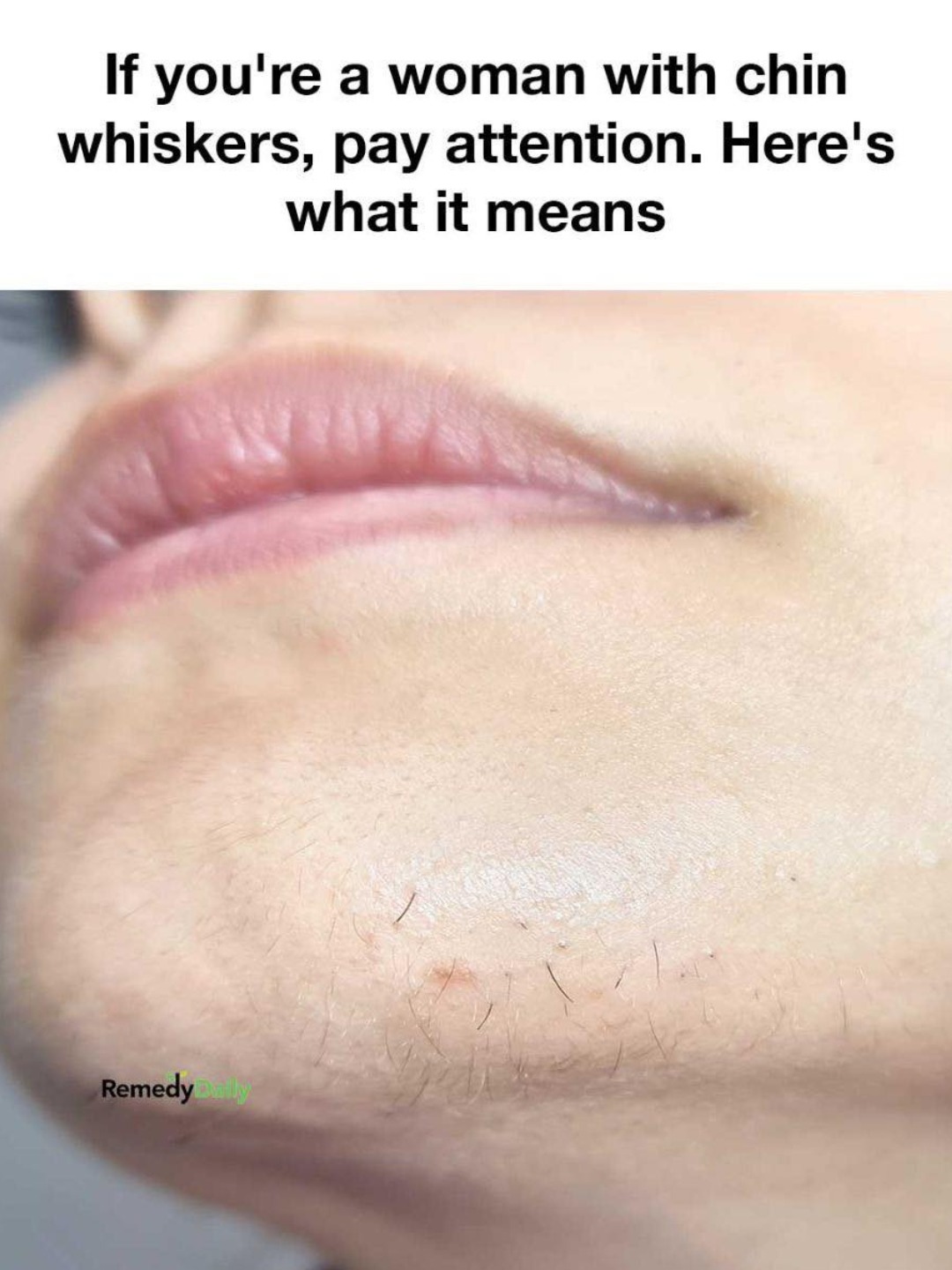What Your Chin Hairs Might Be Revealing About Your Health
You’re getting ready in the mirror when you spot it — another thick, dark hair sprouting from your chin. You pluck it (again), wondering why these hairs seem to keep showing up — especially if you’ve never had this issue before.
While a stray chin hair is usually nothing to worry about, sudden or noticeable increases in facial hair , particularly around the jawline and chin, can sometimes be more than just a cosmetic nuisance. In fact, it could be a subtle sign of an underlying hormonal shift or health change worth paying attention to.
Let’s explore what those stubborn chin hairs might be telling you — and when it’s time to listen.
🧬 1. Hormonal Imbalance: The Most Common Culprit
Chin hairs often appear due to changes in hormone levels — specifically, an increase in androgens , which are often referred to as “male hormones” but are naturally present in all women.
When androgen levels rise — even slightly — they can stimulate hair follicles in areas typically associated with male-pattern hair growth, such as the chin, neck, and upper lip .
Common Triggers of Hormonal Fluctuations:
- Menopause or perimenopause
- Polycystic Ovary Syndrome (PCOS)
- Thyroid dysfunction
- Sudden weight gain or loss
- Changes in birth control methods
These shifts may also affect other parts of your body, including your skin, menstrual cycle, and mood — making chin hairs just one part of a larger picture.
🩺 2. Polycystic Ovary Syndrome (PCOS)
One of the most common causes of increased facial hair in women is Polycystic Ovary Syndrome (PCOS) , a hormonal disorder affecting up to 10% of women of reproductive age .
In addition to hirsutism (excessive hair growth), PCOS may cause:
- Irregular or missed periods
- Acne or oily skin
- Weight gain, especially around the midsection
- Difficulty losing weight
- Hair thinning on the scalp
- Trouble conceiving
If you’re experiencing any combination of these symptoms, it’s worth talking to your doctor about blood tests to check hormone levels , including testosterone, insulin, and thyroid markers.
🌡️ 3. Thyroid Dysfunction
Your thyroid gland plays a key role in regulating your metabolism — and when it’s out of balance, it can affect your entire body, including your hair growth patterns .
Both hypothyroidism (underactive thyroid) and hyperthyroidism (overactive thyroid) have been linked to changes in hair texture and distribution.
While hypothyroidism often leads to overall hair thinning , some women experience unexpected coarse hair growth in unusual places — including the chin.
✅ Action Step: If you’re noticing other symptoms like fatigue, weight changes, dry skin, or mood swings, consider asking your doctor for a full thyroid panel.
🕰️ 4. Aging and Menopause
As women approach perimenopause and menopause , estrogen levels decline, and the relative balance of androgens may increase. This can lead to subtle but noticeable changes in where and how hair grows.
Some women report:
- More frequent chin or neck hairs
- Coarser textures
- Slower hair loss on the head
- Increased body hair in general
This is a normal part of aging for many women — but if the changes feel sudden or extreme, it’s still worth discussing with your healthcare provider.
💊 5. Medication or Supplement Effects
Certain medications can also influence hair growth by altering hormone levels or stimulating hair follicles directly. These include:
- Steroids (like prednisone)
- Hormone replacement therapy (HRT)
- Some antidepressants
- Supplements containing DHEA or creatine
Even over-the-counter herbal supplements marketed for energy, muscle building, or libido can contain ingredients that affect androgen levels.
✅ Action Step: Review your current medications and supplements with your doctor or pharmacist to see if any could be contributing to new hair growth.
🧪 When to See a Doctor
It’s normal to get the occasional chin hair — especially as we age. But if you notice any of the following signs, it may be time to seek medical advice:
- Sudden, rapid increase in facial hair
- Hair growth in multiple male-pattern areas (e.g., chest, back, abdomen)
- Changes in your menstrual cycle
- Persistent acne or scalp hair loss
- Unexplained weight gain or fatigue
A simple blood test can help determine whether hormones like testosterone, insulin, or thyroid-stimulating hormone (TSH) are within normal ranges.
💡 Managing Unwanted Chin Hair
If you’re not concerned about your health but still want to manage unwanted hair, here are some options:
For those dealing with hormonal causes, treating the root issue — whether through lifestyle changes, medication, or supplements — may reduce future hair growth naturally.
🧘 Final Thoughts: Listen to Your Body’s Signals
Our bodies are constantly communicating with us — sometimes through symptoms we overlook, like a few extra chin hairs.
While most of the time, these hairs are harmless and simply a part of life, they can occasionally serve as early indicators of something deeper going on inside your body.
Paying attention to these small changes — and seeking professional guidance when needed — can make a big difference in long-term health and well-being.
So next time you reach for the tweezers, pause for a moment. Ask yourself:
“Is my body trying to tell me something?”
Because sometimes, the answer might just be yes.
